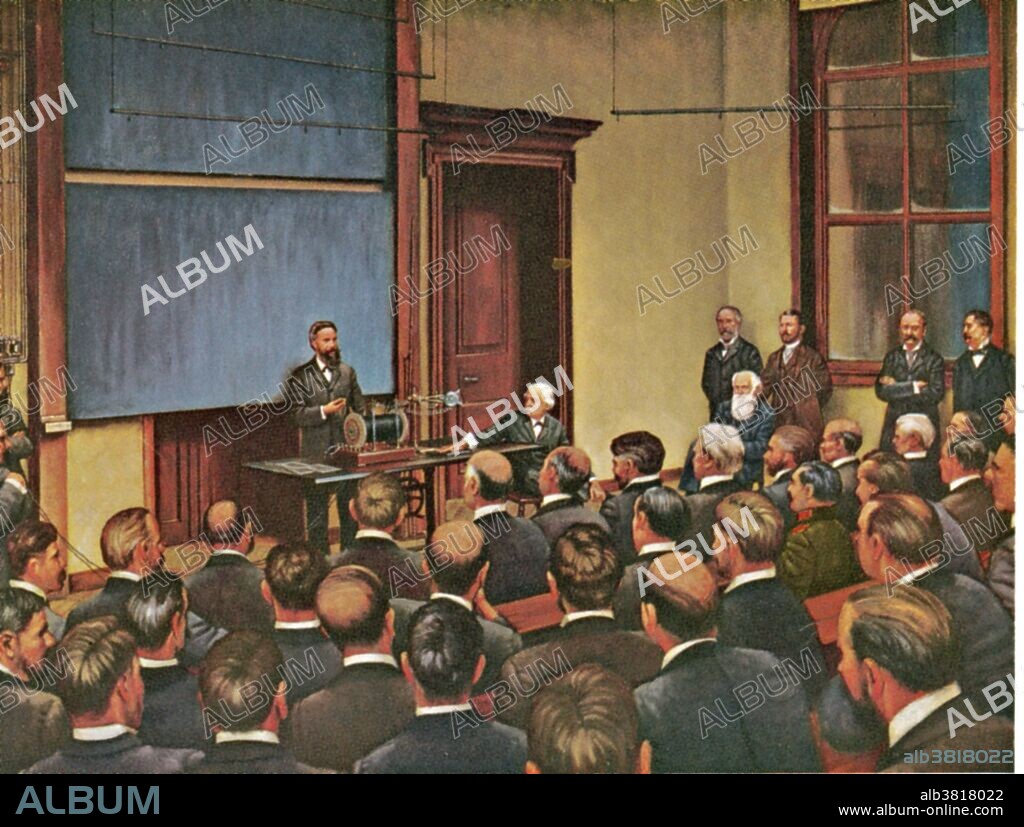alb3818022
Wilhelm Roentgen, First Demonstration of X-Rays, 1896

|
Ajouter à une autre Lightbox |
|
Ajouter à une autre Lightbox |



Avez-vous déjà un compte? S'identifier
Vous n'avez pas de compte ? S'inscrire
Acheter cette image.
Sélectionnez l'usage:

Titre:
Wilhelm Roentgen, First Demonstration of X-Rays, 1896
Légende:
Voir la traduction automatique
January 23, 1896, first public demonstration of Wilhem Conrad Roentgen's newly discovered x-rays. He took an x-ray of the hand of Professor Albert von Kolliker which lead to a lively discussion about the possible medical applications of this discovery.Wilhelm Conrad Roentgen (1845-1923), German experimental physicist and discoverer of X-rays. While using a discharge tube (in which an electric discharge is passed through a gas at low pressure) in a darkened room, Roentgen noticed that a card coated with barium platinocyanide glowed when the tube was switched on. The effect was not blocked by an intervening wall, or even a thin sheet of metal. Roentgen termed this newly discovered phenomenon X-ray radiation, and suggested that it consisted of electromagnetic rays with a shorter wavelength than light. He was awarded the first Nobel Prize for Physics in 1901.
Crédit:
Album / Science Source / New York Public Library
Autorisations:
Modèle: Non - Propriété: Non
Questions sur les droits?
Questions sur les droits?
Taille de l'image:
3924 x 2965 px | 33.3 MB
Taille d'impression:
33.2 x 25.1 cm | 13.1 x 9.9 in (300 dpi)
Mots clés:
ALLEMAND • ALLEMANDE • CÉLÈBRE • CELEBRITE • DÉCOUVERTE • EUROPÉEN • EXPERIENCE • EXPERIENCES • EXPERIMENTATION • HOMME DE SCIENCE • HOMME • JANVIER • LAUREAT DU PRIX NOBEL • NOBEL • PERSONNAGES • PERSONNALITÉS • PERSONNE • PREPARATION D'EXPERIENCE • PRIX NOBEL • SAVANT • SCIENCE: EXPERIENCES • SCIENTIFIQUE • XXE SIECLE
 Pinterest
Pinterest Twitter
Twitter Facebook
Facebook Copier le lien
Copier le lien Email
Email
